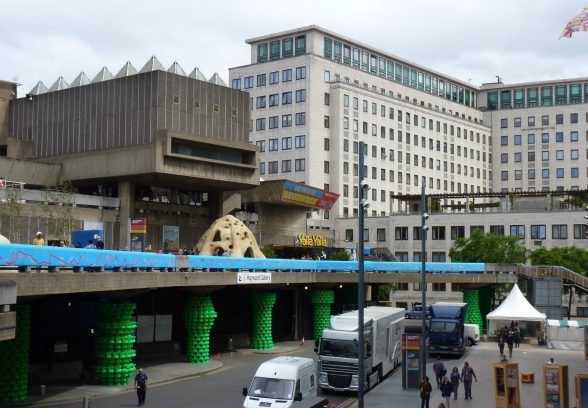This website uses cookies
This website uses cookies to enable it to function properly and to analyse how the website is used. Please click 'Close' to accept and continue using the website.



It has just been announced that Feilden Clegg Bradley Studios has been chosen as the lead architect to “refurbish” the South Bank’s Queen Elizabeth Hall, Purcell Room and Hayward Gallery. The complex is on the World Monument Fund’s watch list, following our nomination after listed was contraversially refused by the Secretary of State.
The practice beat OMA, Heneghan Peng, Allies & Morrison, Eric Parry, van Heyningen & Haward and Grimshaw Architects to the job. Bennetts Associates was also asked to bid, but pulled out earlier this month.
The big question now is “what exactly is the job?” Our requests to date to see the brief have been politely turned down, although we have been consulting with the South Bank Centre on their developing Conservation Management Plan for these buildings. Building Design reports that “The core refurbishment work will include upgrading the stages, galleries, back stage areas and improving poor access” , all of which sounds pretty innocuous,(even if the bill is set to run to £43 million) but rumours abound that there are ambitions to vastly increase the amount of retail space on the site . Inserting shops and restaurants at ground floor level (where skateboarders have made themselves at home) and on the terraces and roofs above could fundamentally change the atmosphere of the complex and obscure much of its wonderful sculptural form. We hope is not what’s lurking behind the phrase “a more ambitious project to reclaim unused and underused space to transform the whole of the complex “which is suggested as follow-on to the initial upgrade.
South Bank master planner Rick Mather has said: “Feilden Clegg Bradley Studio’s proposals won because they best understood the Queen Elizabeth Hall, Purcell Room and Hayward Gallery complex and how it can be enjoyed and used more effectively.” He thereby implies, but doesn’t actually say, that they were the most sensitive to the original architect’s concepts. Let’s hope that is the case. After OMA’s proposals for the Commonwealth Institute it is certainly a relief that they have not been appointed this time, but with an outrageous Certificate of Immunity from Listing current on the South Bank Centre it is all the more crucial that the architect is both sympathetic and willing to contradict any elements of the brief that might prove to be in conflict with the best interests of the building.
We hope to meet with Feilden Clegg Bradley Studios shortly and will certainly lobby hard to be consulted at a pre-application stage.
We have made the following comments on the announcement:
“We love the way that the South Bank Centre has made temporary use of the terraces with the bar, beaches and the boat. But we really hope that what is in store is a minor tweaking and upgrading of the complex, and not an ambition to turn a cultural hub into a shell swamped with shops and restaurants. We need to take a long term view and understand that future generations will appreciate these 1960s buildings as some of the most important in the country. We look forward to meeting Feilden Clegg Bradley, and continuing our dialogue with the South Bank Centre.”
“What the South Bank Centre really needs is an architect who understands what is special about it, and why the buildings and the spaces around them are internationally important. There is certainly room for some changes, but the rumoured concept of a whole scale retail makeover risks undermining all its best qualities. We hope this is just a rumour and look forward to talking to Feilden Clegg Bradley about their initial ideas.”
Catherine Croft, Director
1/10/12

Become a C20 member today and help save our modern design heritage.